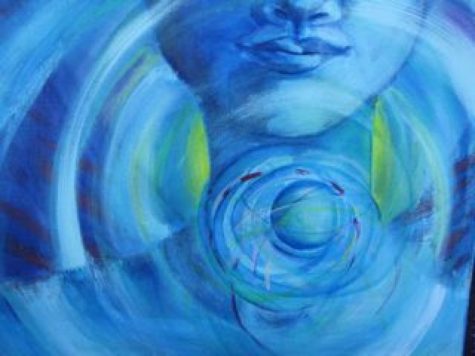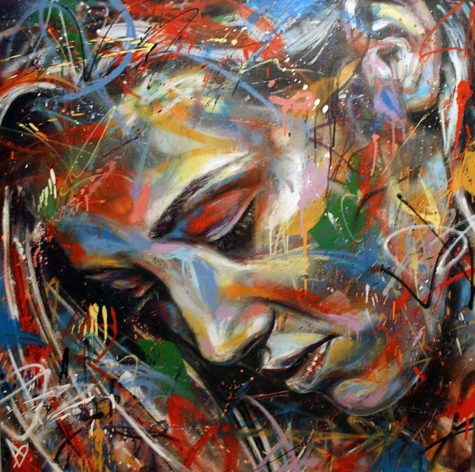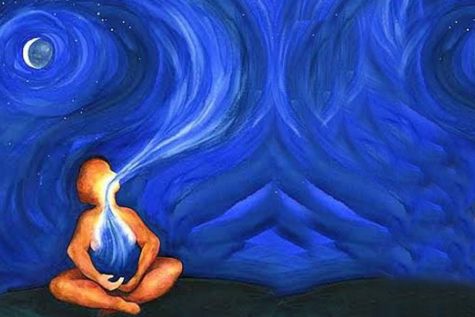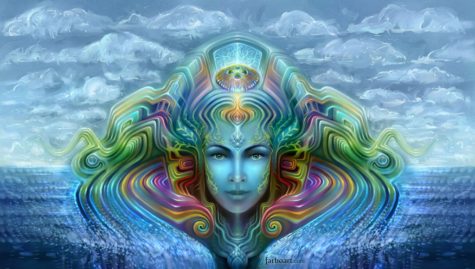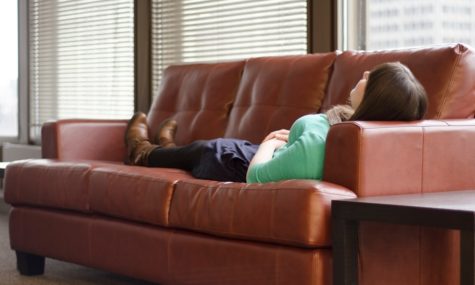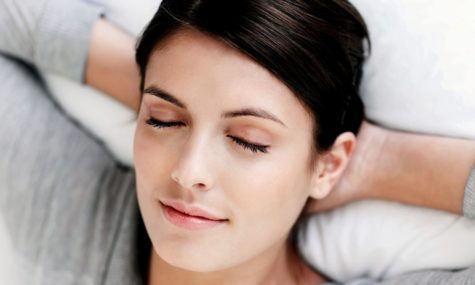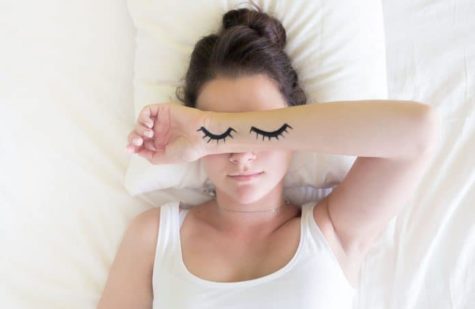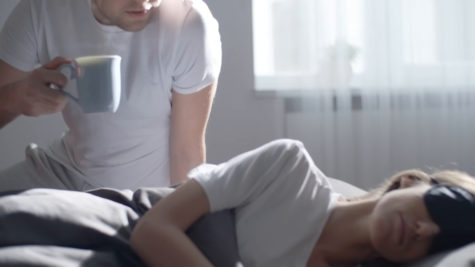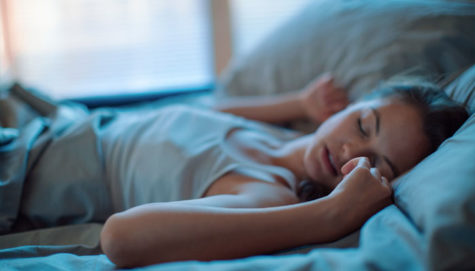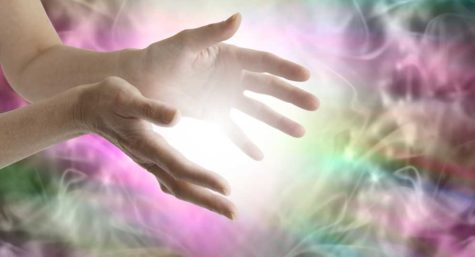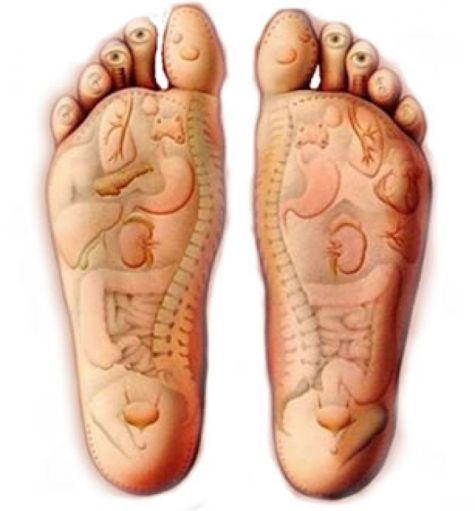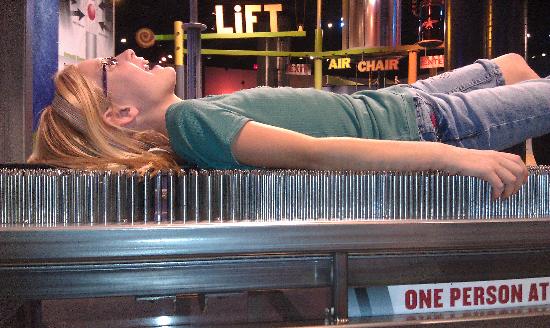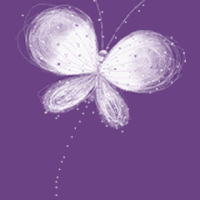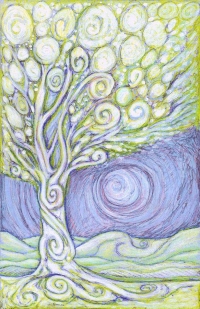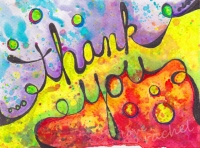Relaxation
Mumbling As A Healing Aid
A variation on humming is mumbling. (For more info on humming and healing see this post on Humming). What is mumbling? Mumbling is speaking with your mouth closed and your lips moving. It produces an effect like humming with the added benefit of subliminal or subaudial suggestion.
When you apply your fingers or hands to an area of the body for healing, instead of humming you mumble affirmations, blessing, or directions. For example:
- I am healthy and full of energy.
- Angels around me, angels above me, angels all around.
- Muscles are relaxing, inflammation is receding, cells are strengthening.
Or you can just talk about your intentions for the healing, saying whatever comes into your mind in the moment. Just remember to keep it to a mumble.
I did this in a taxi for a friend who had sudden stomach cramps and in about three minutes she was fine again. It’s a very handy technique for all kinds of situations.
I use it on my own neck and shoulders when I’m at the computer for too long and often, right afterward, I just turn my neck and my spine adjusts itself. It’s also great for easing sore muscles after a workout and relieving your own headaches.
However, be aware that some people may be distracted or irritated by the mumbling and will not respond well to it.
From: Instant Healing by Serge Kahili King
The Stress Factor
From this great little book, Instant Healing, by Serge Kahili King, we have this nice little article about the stress factor and how it relates to illness and healing:
No matter what kind of disharmony one is talking about, no matter what the name is of the disease or illness that may be involved, and no matter whether the condition is primarily physical or mental, there is always some degree of physical tension present.
It’s common to think of tension as a result of illness, except where certain kinds of stress are thought to contribute to illness, but let’s play with another idea. What if tension were not an effect of illness, but the cause? If this were so, then all one would have to do is promote healing would be to relieve the tension.
Before I discuss relieving tension, however, it will be useful to examine the ways in which tension builds up in the first place. I’ll begin by looking at the source of tension itself, a thing called “stress.”
According to Miriam-Webster’s Collegiate Dictionary, 10th edition, stress is “a physical, chemical, or emotional factor that causes bodily or mental tension and may be a factor in disease causation” and “a state resulting from a stress, especially one of bodily or mental tension resulting from factors that tend to alter an existent equilibrium.” In plain language, this means that different kinds of stress can cause tension in the mind and body, and that we can get “stressed” or tense from resistance to change.
In another part of the definition, I have substituted the word “thing” where Webster used “body or body part.” This section says that stress is a “constraining force or influence, as a force exerted when one thing presses on, pulls on, pushes against, or tends to compress or twist another thing, especially the intensity of this mutual force and the deformation caused in a thing by such a force.”
The plain language translation is that stress is not only the action of pressing, pulling, pushing, compressing or twisting. It is also the reaction of pressing, pulling, pushing, compressing, or twisting against the other force. Stress isn’t stress unless there is resistance. It is the resistance that causes the tension, and the tension that causes the problems.
Note also that a “constraining force or influence” can also come from a lack of something, such as food, water, or love, and is not limited to something active.
Stress in and of itself, isn’t bad. It’s vital for building muscles, moving, breathing, motivation, and a number of other things that are useful and necessary. But if you try to lift a heavy weight for too long, the muscles will break down instead of build up. If you eat so much healthy food that your stomach is ready to burst, you are doing yourself more harm than good. If you try to save the world by making people change, you’ll be so stressed out that you’ll accomplish very little.
Examine your own experience and you will find that it is not just the ordinary stress of daily living, but excessive sudden stress (acute stress) or sustained excessive stress over a period of time (chronic stress) that causes the severe problems. Too much tension, one could say, although “too much” will differ among individuals and circumstances.
A deeper explanation of the different types of stress can be found here:
- The Physical Stress Factor
- The Emotional Stress Factor
- The Mental Stress Factor
- The Spiritual Stress Factor
Many modern healing systems are often ineffective because they are overly exclusive. In other words, they tend to treat illness as being caused only by physical or emotional or mental or spiritual conditions, and to reject some or all of the others as having no bearing on the problem.
Yet tension can come from any of these realms and there is usually a combination of more than one in a particular symptom. Even something as simple as a smashed finger can be related to feelings of guilt, or confusion about a life direction, or to spiritual alienation, or to all three at once.
If the finger is only treated at the physical level, the healing will be slowed down by the tension being maintained by one of the other conditions. A healer ignores any one of them at the peril of the healee. Frequently, dramatic improvement in mental health occurs through nutrition, tumors are removed with hypnosis, and emotional release cures spiritual apathy.
In my view of healing, excessive physical, emotional, mental, or spiritual stress, or any combination of these, cause the excessive tension that produces illness or disharmony. It follows, therefore, that reducing or removing the stress, either the external condition or the internal resistance, would allow a relaxation of the tension that would either result in a healing or greatly benefit the healing process.
Breathing ~ The Key To Healing
The health that you enjoy today, and for the rest of your life, begins with your next breath. In fact, breathing is so crucial to your body’s ability to heal and sustain itself that Dr. Andrew Weil says: “If I had to limit my advice on healthier living to just one tip, it would be simply to learn how to breathe correctly.”
Here, we will learn a breathing technique that Dr. Weil uses in his own life: “the most powerful relaxation technique” that he has come across and one that he teaches to almost all of his patients. Dr. Weil reports that breathing exercises get more favorable response from patients than anything else he teaches.
To learn the art of healthy breathing, Dr. Weil turned to Eastern traditions, including yoga, which view the breath as a vital link to the prana, or energy of the universe. In his practice and research, Dr. Weil discovered the secret of breathwork’s power over your health and its remarkable ability to influence—and even reprogram—the nervous system. From increasing energy to lowering blood pressure to improving circulation to beating anxiety disorders without drugs, breathwork offers tremendous benefits to our health and well-being.
How to Prepare for Breathwork
Try to find a quiet place with no distractions. Pick a comfortable chair to sit in, and keep your back straight. Make sure your head is in a comfortable position. You can close your eyes or keep them open (or halfway open).
It’s best if you can practice the following breathwork technique daily. Find times in the day when this practice feels natural and logical and when you will not be interrupted—and make a resolution to do it at those times. The amount of time you spend on this work is not important, but regularity is. Only with constancy of input over time can you change the rhythms in your nervous system for better health.
Throughout the exercise, keep your tongue in the “yogic” position. Touch the tip of the tongue to the backs of the upper front teeth, and then slide it up just a bit, until it is lightly touching that ridge of hard tissue between the teeth and the palate (the alveolar ridge). Yoga philosophy teaches that there are two nerve currents of opposite polarity in the human body that begin and end at those points. When you make that connection with the tongue, it’s said that you’re completing a circuit and keeping the energy of breath within instead of dissipating it to the outside.
The Relaxing Breath
The Relaxing Breath is the most powerful relaxation method I know, and one that I teach to almost every patient I work with. You may feel a little lightheaded when doing it for the first time, but the sensation will disappear as you practice this breath regularly.
Inhale through your nose quietly and exhale through your mouth noisily, exhaling around your tongue (it helps if you purse your lips). The sound you make when you exhale is a kind of whoosh. Try that a few times so that you get comfortable with exhaling through your mouth and around your tongue.
Begin the Relaxing Breath by exhaling through your mouth completely. Then inhale quietly through your nose to a count of four, hold your breath for a count of seven, and exhale through your mouth for a count of eight. Repeat that for a total of four breath cycles (you will find that this takes very little time). What is important here is the ratio of four, seven, and eight for inhalation, hold, and exhalation, respectively. The amount of time you spend doing the four breath cycles is not as important as that ratio.
Your exhalation must last for a count of eight, so resist the temptation to blow it all in the first two seconds. Let out a slow, measured breath; then repeat the cycle again. At the end of four breath cycles, just breathe normally without trying to influence the breath, and notice how you feel.
To reap the long-term benefits of the Relaxing Breath, do a minimum of four breath cycles twice a day. After a month, you can increase the number of cycles to eight, twice a day—but never do more than eight breath cycles. This is a very powerful technique, and it has profound effects on physiology.
After you have worked with this exercise for some time, you can begin to use it in a variety of ways. If something upsets you—for example if somebody speaks to you harshly or cuts you off in traffic—do the Relaxing Breath before you react. It is also the most effective anti-anxiety technique I know.
Abdominal Breathing
Finally, I would like to leave you with one very powerful tip which will allow you to maximize self-healing through breathwork. In order to take the fullest kind of breath, you have to do what is called “abdominal breathing”: that is, when you take a deep breath, your belly should move outward. To find out whether this is happening, just put your hand on your abdomen and see whether it moves outward as your belly expands.
Many of us do not let our abdomen expand freely as we breathe. We restrict those muscles, and as a result are unable to take a full, deep breath. So another general tip about breathing is to practice just taking some deep breaths and letting your belly move outward. Only when that movement occurs are you taking the full volume of air into your lungs that you are capable of taking in.
Conclusion
If today you can be aware of breathing for ten seconds more than you were yesterday, you will have taken a measurable step toward expanded consciousness; deeper communication between mind and body; and integration of your physical, mental, and spiritual functions. I can recommend no single more powerful—or more simple—daily practice to further your health and well-being.
From Breathing: The Master Key to Self-Healing by Andrew Weil, MD
How to Give Yourself a Relaxing Scalp Massage

Proper knowledge of the pressure points on head helps provide an extremely relaxing and effective method of getting rid of your migraine. It releases tension, increases blood circulation and enhances one’s mental state.
The following are steps for performing a scalp massage:
- First, find a place in your room that is comfortable and noise free. Take a seat at that spot.
- Next, place fingers of both hands on your forehead and let them touch each other at an imaginary midline and keep your thumbs rested on the temple.
- Apply firm but light pressure on the forehead and then release the pressure. Repeat this.
- Next shift your fingers along with the thumb further up your forehead towards the hairline region. Press again and release, and repeat the steps.
- Now move further up with your fingers on your scalp and keep pressing and releasing with your fingers.
- An acupressure point lies three quarters of the distance from your hairline up your scalp. Press your scalp at this point and release.
- Keep moving downwards towards your neck with your fingers and keep massaging various pressure points on head.
- Once you reach the base of your skull, move all the way back to the forehead again. This time place your fingers half an inch away from the imaginary midline of your forehead and work all the way up like earlier in this new position.
- Again get back to the forehead and this time place your fingers at an inch’s gap from the midline and work your way up.
Once you get used to this procedure, synchronize it with your breathing. Inhale while you press and exhale while you release.
Source: New Health Advisor
Guided Imagery for Self-Healing
Learn to use guided imagery and the power of your mind to bring about a state of deep relaxation and healing.
Guided imagery works. Study after medical study over the past three decades has found that the power of the mind can influence almost every major system of the body—from breathing and heart rate to digestion and immune response.
What follows is an experiential session of guided imagery that will allow you to experience first-hand the many benefits of this powerful technique. You might want to read the session aloud and record it so that you can and then replay and listen to it.You will activate your body’s own innate healing response and access deep levels of peace and relaxation.
Before you get started, here are some suggestions for working with guided imagery:
- For your own safety and the safety of others, never listen to guided imagery exercises while you are driving or operating dangerous equipment.
- It may be easier to concentrate if you practice in a quiet, darkened place or use an eye pillow.
- Try headphones or speakers (if you have the choice) and see which one you prefer.
- Get comfortable and feel free to move any time to stay comfortable.
- Let your answering machine or voicemail take care of your calls; turn off the ringer or unplug the phone.
- Tell your housemates not to disturb you for about thirty minutes unless there’s a genuine emergency.
- Accept the way you imagine things. Images are rarely vivid or clear, and they may not even be in picture form.
- Be kind to yourself and give yourself time to experiment. If you’re a newcomer to guided imagery, go along with each experience in your own way and notice what you learn or what happens for you each time.
- To deepen your experience with guided imagery, take some time afterward to draw or write about it.
How to Prepare for Guided Imagery
Before beginning any imagery process, get comfortable in a place where you feel safe and where you won’t be disturbed for about thirty minutes. You may want to put a sign on your door or tell anyone who needs to know that you’d like some privacy for this time. Loosen any tight clothing or jewelry as you get comfortable. Know that you can shift or move at any time to be even more comfortable.
As you begin to relax, you’ll probably find it easier if you let yourself close your eyes. But you can open them anytime you like and then close them again whenever you want to return to your deep relaxation.
Learning to relax with imagery simply involves learning how to pay attention to different things and to shift your attention from the outer to the inner world. First, take some time to focus on your breath, letting it get a little easier and deeper. Then invite your body to relax part by part, and you’ll find that your body really likes to relax. All you need to do is to invite it and let it relax in its own way, then notice how each part of your body relaxes.
Guided Imagery Practice
When you’re ready to relax more deeply, begin noticing your breathing. Notice that on the in-breath you’re bringing in fresh energy, vitality, and oxygen, which flow to all parts of your body. Let every out-breath, every exhalation, be a real release of the breath. As you begin to head for a deeper level of relaxation, make a small movement to signal this shift toward deep relaxation.
You may want to briefly lift a finger and then let it come to rest again. Or you may want to gently roll your eyes up and take an especially deep breath; then let your eyes become comfortable again as you begin to relax.
As you begin to relax, let your attention shift from the outer world to your inner world. Invite your body, your mind, your feelings, even your spirit to release any tension that doesn’t need to be held right now. You don’t even have to know what you need to hold onto and what can be released.
Simply invite the body or parts of the body to release any tension that you don’t need to hold onto right now. Observe what happens.
You may notice that some parts of the body release quickly and easily while others take more time. That’s perfectly okay. Simply invite the parts of the body to relax. Notice how they respond. And let whatever they do be perfectly alright right now—without worrying about how quickly or deeply any part of you relaxes. Just invite this relaxation and unwinding to happen and notice how each part of the body responds.
As you focus on different parts of the body, you’ll notice that you may feel things in them that you didn’t notice before when your attention was elsewhere. That’s perfectly normal. Just notice that there’s feeling, awareness, responsiveness, in each part of your body. You might even experience it as a type of intelligence.
So notice this intelligence and awareness in one of your feet and ankles. Notice any tension or sensation and what happens when you invite that foot and ankle to release any tension it doesn’t need to hold right now. Simply invite the foot and ankle to begin to relax, more deeply and comfortably.
Then notice your other foot and ankle—how that part of your body feels right now. Invite that foot and ankle to also begin to relax, in its own way. And notice how it responds.
In the same way, notice the intelligence in your legs and invite your legs to release any tension or discomfort. Begin to relax more comfortably, and notice their response. Without having to make any effort at all, just allow the legs to soften and release, letting it be a comfortable and pleasant experience. Don’t worry about how any part of you relaxes, how deeply you relax, or how you relax more deeply.
To relax even more comfortably, continue to notice the intelligence in different parts of your body and invite them to join in this softening and relaxation.
As you relax, please know that no matter how deeply you relax, if you ever need to return your awareness to the outer world, you’ll be able to do that by simply opening your eyes and looking around, coming fully alert. If you’d like to try that now, please do.
Knowing that, you can let your eyes close again and return your attention to the inner world of your imagination.
Notice now the intelligence in your hips, in your pelvis, in your low back, and invite them to release and to relax. Soften and release without effort or struggle, letting it be a pleasant, comfortable experience.
Notice your abdomen, your waistline, and midsection and invite that part of your body to soften and relax more deeply.
Notice your chest and rib cage and invite them to soften and relax. Release any tension that doesn’t need to be held there. Especially pay attention to the muscles between and across the shoulder blades, inviting them to join in this deepening sense of relaxation.
Just let go, relax deeply and comfortably—but stay aware as you do.
Now invite the intelligence in your back and spine to soften and release. Relax your low back, up through the mid-back, between and across your shoulder blades, then across your neck and shoulders, and all the way up into your neck.
Then invite that sense of relaxation to flow through your arms, over your shoulders, down through your arms, through your elbows, forearms, wrists and hands, and all the way down into the palms of the hands, the fingers, and the thumbs.
Notice the intelligence in your face, inviting the muscles of the face and jaw to become soft and at ease. All the scalp and forehead to become soft and at ease. Invite the little muscles around the eyes to take a well-deserved rest. Even your tongue can relax and become soft in your mouth.
Now when you’re ready to relax even more deeply and go to a place where your body’s natural healing abilities can operate at top efficiency, imagine yourself going some place especially beautiful that you love to be in. It may be a place you’ve actually been or a place you’ve imagined—just wherever comes to mind right now. It doesn’t matter as long as it’s a place that’s beautiful safe, secure, private, and powerful.
This is a special place for you—a place where you feel safe and at ease.
If more than one place comes to mind, pick whichever one attracts you most right now. Imagine yourself there and take some time to look around in your inner world and notice what you see. You may not see in exactly the same way as you do in the outer world, but you can tell what you’re imagining.
Just notice the objects and colors you imagine seeing here.
In the same way listen carefully and notice what sounds you imagine hearing in this beautiful, healing place.
Perhaps the place is just very quiet.
Let it be what it is for now—as long as you feel comfortable and safe. It’s a place you love to be, and you can let yourself be there now, simply because you choose to. And you can enjoy it as much as you like because you choose to.
Know that while you’re enjoying this special place, your muscles are relaxing, your blood is flowing easily and bountifully to every part of your body. Your breathing is easy and fresh oxygen and energy is being delivered to every cell of your body. Your body is repairing and renewing itself on every level. And there’s nothing else you have to do while your body is doing that.
If you like, you can grant yourself the luxurious permission not to do anything else right now or to go anywhere else. Let yourself feel what it’s like to do absolutely nothing. And have it be good for you so you’re actually doing something by doing nothing. In this case, let your body relax and know that while it relaxes it can repair, restore, and renew.
Notice what the air is like in this special healing place, what the temperature is like. I wonder if you can tell what time of day or night it is? What the light is like? What time of year it seems to be?
Now find a spot where you feel most centered, relaxed, and most deeply connected with this place and the healing qualities and energies you feel here. Let this be a special place of healing, of deep restfulness, of renewal, and restoration for you. And as you deeply relax in this place, you may want to notice what it feels like to be surrounded by and supported by the energies that you find healing in this place. If it feels comfortable, just let yourself soak up whatever feels good, whatever feels nourishing and vitalizing, energizing, and healing.
As you allow this to be a comfortable and enjoyable sense of deep relaxation, you can know that as you relax this way, your body can direct its energy to whatever healing and repair is needed, wherever its needed. Your body knows how to heal, and this time allows it to concentrate its healing abilities wherever that attention is needed. The blood flows easy and naturally to whatever area needs nourishment and renewal; the blood washes away tension, soreness, inflammation, or anything that doesn’t belong there—leaving behind in its place a sense of refreshment, renewal, and vitality.
In this relaxed and comfortable state, your body’s healing abilities and wisdom can operate at peak efficiency, without distraction from the challenges of daily life and without having to attend to anything else right now. Your muscles relax, your blood flows easily and naturally, your immune system works efficiently. Your tissues repair and renew. Your brain and mind are refreshed. Your mind can rest and become quiet and clear.
Take a minute to enjoy this sense of deep relaxation, comfort, and healing.
Stay relaxed and know that anytime you want to experience this deep state of relaxation, inner focus, and healing, you can return by simply getting comfortable and letting your breathing deepen. Making the relaxation signal you’ve chosen, invite the different parts of your body to relax and go to this inner place of relaxation and healing. You can stay there as long as you like. And when you come back to the other world, you can do so feeling more relaxed and refreshed than before. You’ll be clearer in mind and more comfortable in your body.
To return to the outer world, look around your healing place once more and let yourself notice your appreciation for having such a place inside and for being able to use your mind in this way to help your body relax, repair, and heal.
Knowing that you can return to this place at any time of your own choosing, prepare to leave and come back to the outer world. But first, take a moment to review what’s happened in this brief experience and if there’s anything you especially want to bring back with you when you return to the outer world.
It may be something you realized or learned about relaxation or healing. It may be a feeling of deep relaxation, refreshment, comfort, or healing.
When you know what you want to bring back, let the images fade and begin to pay attention to the space and sounds around you, and to the room you’re in. Begin to feel your body coming alive and awake. Gently stretch or wiggle your fingers and toes. Let your body return to the outer world feeling more relaxed and more refreshed than before—more comfortable yet more alive. Your mind will be clearer and refreshed, your senses sharper.
And as you return your attention to the outer world, you may feel you’re awakening from a deeply refreshing rest. Let your eyes open and look around, coming all the way awake and alert, all the way back into the outer world, bringing back with you whatever you’ve chosen to bring back.
As your attention returns to the other world, you may want to take some time to make some notes or sketch something about this experience. Let yourself feel good about learning to relax and enhancing your body’s ability to heal in this way. Prepare to make the very best of the rest of your day or evening.
Source: Self-Healing with Guided Imagery
Healing Sleep
Sleep is one of nature’s greatest inventions and blessings of life. It is a periodic rest of the body which is absolutely essential for its efficient functioning. It has been called ” most cheering restorative of tired bodies. ” Sleep is the indispensable condition to the recuperation of energy. We go to bed fatigued and get up refreshed. Sleep repairs the wear and tear of the body and mind incurred during waking hours.
Nothing is so restorative to the nerves as sound and uninterrupted sleep. Sleep is thus a vital element in a total way of life. It is a basic need in man’s mental as well as physical life. During sleep most of the functions of the body are carried on at the lowest level possible in health.
Heat production is from 10 to 15 per cent below the basal level. The mechanism regulating the body temperature are less sensitive than in the waking state and are depressed by 0.5 to 1.0 degree F. The rate of the heart is reduced by 10 to 30 beats per minute and a decline in blood pressure of about 20 mm occurs in quiet restful sleep. The urine volume is considerably reduced, but its concentration in solids is increased. The tone of all the skeletal muscles is lessened. The eyes are usually rolled upward and the pupils constricted.
Loss of sleep exerts seriously detrimental effects upon the nervous system. Long periods of wakefulness may cause profound psychological changes such as loss of memory, irritability, hallucination and even schizophrenic manifestations. During the last World War, prisoners in Nazi concentration camps who kept awake for days by strong lights and blaring wireless sets, collapsed.
Sleep Versus Rest
For correct living, it is essential to differential between sleep and rest. At rest the body is disturbed by all exterior noises ; but in sleep it is screened from them by partial loss of consciousness and also by what is called ” dream protection. ” One useful purpose of the dream is to convert outside noises that might awake the sleeping person, into fantasies that do not disturb him.
During rest the limbs are normal, but in sleep they swell. Blood flows from the brain, distends the arteries, and makes the limbs bigger. IN sleep more muscles are relaxed than in rest, though the sleeping person changes his position about 35 times in one night, without knowing it. Many organs which work during rest suspend their activities in sleep. Thus the recouping value of sleep is much more than that of rest or simple lying down.
Theories of sleep
Many theories of sleep have been advanced to explain the temporary loss of consciousness which we know as sleep. The oldest theory is that sleep is induced by a reduction in the blood supply to the brain or at least to conscious centers. This is known as ischemic theory. Even the ancient Greek physicians were aware that the carotid artery was in a way concerned with the onset of sleep. The name itself expresses this belief. The Greek word ‘ Karotides’ for carotid arteries is derived from karoo which means ‘put to sleep.’
In modern times, the drowsiness after a meal, presumably due to the diversion of blood from the brain to the digestive organs, is cited in support of the ischemic theory. Another important theory about sleep is the chemical theory.
As a result of experiments in the metabolism of sleeping subjects, it is considered that the fatigue inducing sleep may be a mild form of blood poisoning or toxaemia. This ” poisoning” is believed to be brought on by the expenditure of energy during the waking hours. According to this theory, every contraction of a muscle and every impulse passing through the brain or the nerves breaks down a certain amount of tissue. The debris from broken down tissue is then thrown into the bloodstream. In the waking state, much of the waste from broken down tissue is got rid of through the natural eliminating processes of lungs, kidneys, bowels and skin.
But there comes a saturation point when there is such an accumulation of waste that it cannot be disposed of by these processes and it then invades the grey matter of the brain. In such an eventuality, mental and physical alertness are impaired. It is nature’s warning that the waste product must be reduced to replenish the lost energy. So we get tired and the urge to get sleep becomes irresistible.
During sleep, the cells and tissues that break down to produce toxic waste become less active and the production of toxic waste is vastly reduced. Simultaneously, constructive activities take place within the body during sleep, which rebuild the broken down tissue.
Another theory places a sleeping center in the hypothalamus. Many of the bodily changes in sleep such as constriction of pupils, reduced frequency of heart beat, increased gastric tone and secretion are manifestations of the activity of hypothalamus nuclei, especially parasympathetic centers. Perhaps some of the sleeping pills affect this center in the brain.
Although the various theories have certain amount of experimental evidence to support them, none has really solved what is the most mysterious process in our lives. All we know is that sleep substitutes constructive measures for the destructive processes of our waking hours. We cannot live without sleep.
Duration
Another mystery about sleep is that no two persons need the same amount of sleep. Dr. Nathaniel Kleitman, Associate Professor of Physiology at the University of Chicago, who conducted years of extensive experiments at the University’s “Sleeping Laboratory” says that there is no more a normal duration of sleep than there is normal height and weight. A study of 25 subjects spread over thousands of nights showed that the average amount of sleep needed to feel well rested is seven-and-a-half hours, though individuals varied from six to nine hours.
According to Dr. Dennis Williams, a noted authority on sleep, the amount of sleep needed for an individual’s well-being, is determined by what he feels he needs, not by what other people, including the doctor, think is reasonable. On the whole, women sleep from 45 minutes to one hour more than men. The amount of sleep required varies at different ages as follows :
- New Born : 18 to 20 hours
- Growing children : 10 to 12 hours
- Adults : 6 to 9 hours
- Aged persons : 5 to 7 hours
The depth of ordinary restful sleep fluctuates throughout the sleep. In most adults, sleep deepens through the first hour, after which it lightens rather sharply and then more gradually until morning or until the usual time of wakening. In growing children, however, sleep deepens a second time for a little while.
According to Dr. Lindlahr, a famous naturopath, two hours before and two hours after midnight are the most valuable for sleep of all the twenty-four hours of the day. In these four hours, mental and physical vigor are at their lowest ebb and sleep is soundest and most natural.
It is believed that three-quarters of our sleep consists of what is called ‘ slow wave sleep.’ The restorative processes occur during this time. The remaining quarter is taken by what is called ‘rapid eye movement (REM) sleep.’ It is also called paradoxical or dreaming sleep and it comes in episodes of about 20 minutes duration about five times in a night. It involves dreaming, irregular heart rates, raised blood pressure and erection of the penis. It is in this phase of sleep that normal healthy young men may have wet dreams. Both forms of sleep are considered equally important, being normal sleeping rhythms.
Sleeping positions
There are many theories about good and bad sleeping positions. Practically everyone changes positions several times during sleep. Hence how one starts out is of no consequence. It is a good thing we do turn about in our beds. If we did not, we would awake in the morning stiff, having maintained the same position all night.
For proper sleep, however, one should not sleep on one’s back but on the side with one or both legs brought well up and the head and the shoulder slightly forward.
To Sleep Well
Sleeping pills are no remedy for sleeplessness. They are habit-forming and become less effective when taken continuously. They lower the I.Q. dull the brain and can prove fatal if taken in excess or before or after alcohol. The side-effect of sleeping pills include indigestion, skin rashes, lowered resistance to infection, circulatory and respiratory problems, poor appetite, high blood pressure,kidney and liver problems and mental confusion.
Sleeping well is an art. It needs a perfect blend of healthy habits and control of mind. A clean body and mind, relaxed mood, physical exercises, and perfect dietary control are some of the basic sleep-inducing methods. Unpleasant situations at bed time such as arguments, quarrels, watching a horror movie, listening to loud music which would create anxiety, fear, excitement and worries should be avoided. Such situations stimulate the cerebral cortex and tend to keep one awake.
The sleeping place should be well ventilated, with balanced temperature and free from noises. The bed should be neither too hard nor too soft, but comfortable. The pillow should not be too hard or too high. The bed clothes should be loose-fitting and light colored. Another important rule is not to have heavy food shortly before bed time.
What is Reiki?
Reiki is a Japanese technique for stress reduction and relaxation that also promotes healing. It is administered by “laying on hands” and is based on the idea that an unseen “life force energy” flows through us and is what causes us to be alive. If one’s “life force energy” is low, then we are more likely to get sick or feel stress, and if it is high, we are more capable of being happy and healthy.
The word Reiki is made of two Japanese words – Rei which means “God’s Wisdom or the Higher Power” and Ki which is “life force energy”. So Reiki is actually “spiritually guided life force energy.”
A treatment feels like a wonderful glowing radiance that flows through and around you. Reiki treats the whole person including body, emotions, mind and spirit creating many beneficial effects that include relaxation and feelings of peace, security and well being. Many have reported miraculous results.
Reiki is a simple, natural and safe method of spiritual healing and self-improvement that everyone can use. It has been effective in helping virtually every known illness and malady and always creates a beneficial effect. It also works in conjunction with all other medical or therapeutic techniques to relieve side effects and promote recovery.
More Reiki information can be found here: Twofeathers Reiki
About Reflexology
Reflexology involves the use of different massage and pressure techniques to relax and loosen muscles in the feet and hands. Reflexology is based on the concept that energy zones connect certain areas of the body to the feet and hands. In this way the feet and hands are viewed as maps or mirrors of the body. Putting pressure on and massaging specific points on the feet or hands is believed to affect the corresponding area of the body.
Each foot contains more than 7,000 nerve endings. Technically, foot massage with a clear intention to manipulate these nerve endings is a form of reflexology. To an extent, reflexology can be performed on oneself.
Source: Holistic and Complementary Therapies
About Massage Therapy
Massage therapy is the manipulation of muscle and connective tissue to enhance function and promote relaxation and well-being. It is an alternative and complementary healing modality that dates back to prehistoric times.
Massage therapy can be as simple as a back rub performed by a loved one or as complex as sustained light and deep tissue massage performed by a massage therapist.
Different types of massage therapy and techniques exist. Massage therapy can include pressing, rubbing, pulling, staccato touch, light touch, gliding strokes, matching, back walking, kneading, tapping, shaking, and cupping. These various techniques are practiced differently from culture to culture and may be given different names.
Source: Holistic and Complementary Therapy
Sleeping On A Bed of Nails
Can modern day “bed of nails” help back pain?
Most people will be affected by back pain at some point in their lives. And lots of money is spent in their quest for relief. But a new treatment is gaining momentum, “Early Show” contributor Taryn Winter Brill said Monday.
Imagine lying down on a device that mimics a bed of nails! Mats with thousands of nail-like plastic spikes are being touted as a relaxation technique that may relieve back pain, stress, and even cure insomnia.
If you feel that strain and pain in your lower back, your misery is in good company. “What the data shows is that 80 percent of the Americans will experience lower back pain in some point in their lifetime, and that’s probably an understatement,” Dr. Christopher Gharibo of NYU Medical Center explained.
It is estimated that at any given time, more than 30 million Americans are experiencing back pain, and back pain is big business — from patches to pills, back pain sufferers will try almost anything to get relief.
“Patients come in often and tell me, for example, ‘Doctor, just cut the nerve, do whatever you need to do to address this back. I just simply can’t go on like this. I’ll have surgery, I’ll have injections, give me the medication. I need but I really need help to be able to function,'”‘Dr. Gharibo said.
But will they try what’s called a “Halsa” mat, which looks a little like a tool for torture? “Some people call it an acupressure mat or a nail bed,” product spokesperson Brenna Haysom said.
Yeah, she said nail bed — that thing you might see a yogi using for meditation or a stunt guy showing off how tough he is. This modern version replaces the nails with more than 8,000 pointy plastic spikes. And it’s supposed to help relax you and relieve pain.
Winter Brill tried it out. “There was definitely a prickly feeling, but it didn’t hurt like I imagined it would,” she remarked.
“Just to get a sense of what’s happening, this is stimulating pressure points which are releasing hormones?” she asked.
“Yes, hormones,” Haysom, the spokesperson, replied.
The mat is based on the theory of acupressure: that the body is lined with “pressure points” which, when stimulated, release the body’s natural pain-relieving hormones.
For further evaluation, “The Early Show” took the mat to colleague Geri Papiernick, a chronic back pain sufferer. “I get sharp shooting pains in my hips and down the legs. I get sharp shooting pains and it just stops you in your tracks,” Papiernick explained.
It’s been this way for 15 years, and five surgeries haven’t helped. Her pain is so chronic, so excruciating, she’s forced to take a legion of pills — between 12 and 18 a day including morphine and methadone — just to function.
Papiernick was willing to give the mat a try. She said it didn’t hurt to lie on the mat, and she said it felt good just to lie on the floor.
Asked if she could see herself doing this on a daily basis, Papiernick said, “Sure, if there were a long term beneficial effect, I could do it every day.”
And it’s in the pursuit of that daily relief that Papienick and her fellow back pain sufferers will spend at least $50 billion a year on remedies.
While research so far is preliminary, recent studies have shown that nail mats used 15 minutes a day for three weeks reduced patients’ peak levels of pain.
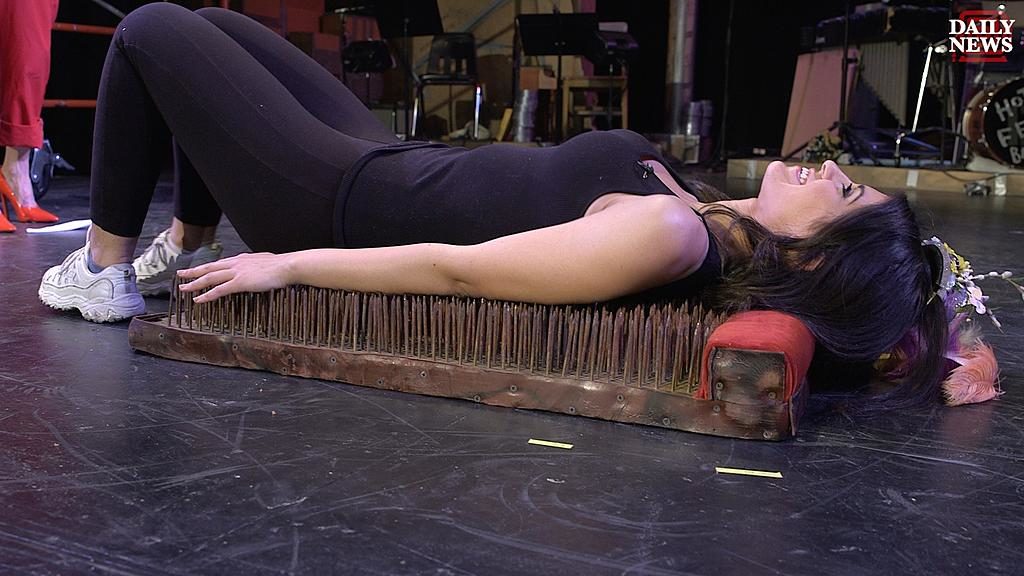
They found that back temperature was higher on the nail mats as compared to a traditional mattress, as a result of increased circulation. Also the heart rate was lowered, indicating greater relaxation.
Source: CBS News
